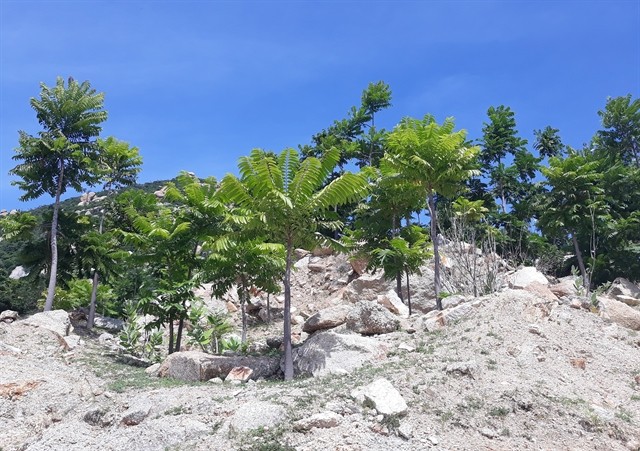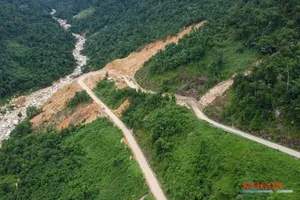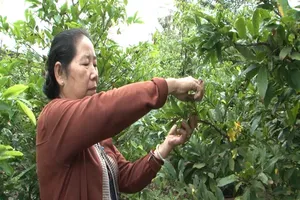
It has zoned an area of 204,200ha for the purpose, according to its Forest Protection Sub-department.
It has large tracts of vacant lands and bare hills, especially in coastal areas in Thuan Bac, Ninh Hai , Ninh Phuoc , and Thuan Nam districts, which face a high risk of desertification.
To increase the forest cover, the province will grow 505ha of protective forests and special-use forests, and replant 302ha this year, according to the sub-department.
It will also regrow 3,027ha of natural forests and allocate 65,987ha of existing forests to households and organisations to protect and sustainably exploit their resources this year.
Dương Đình Sơn, deputy head of the sub-department, said the protection and planting of forests face difficulties this year because of drought.
To meet the coverage targets, the sub-department seeks to strengthen measures to protect existing forests and choose trees that are drought resistant, he said.
Those entrusted with managing the forests have seedlings and other inputs ready for planting when there are rains and the weather is favorable.
They have advocated the benefits of having forests locally, and so the public participates in programs and projects to grow and protect forests.
They collaborate with authorities to monitor forests to prevent illegal logging and destruction.
The province annually pays households VND400,000 (US$17) per hectare of forest they are allocated to manage.
It provides rice to households that participate in afforestation of hills and protection of forests.
It has developed livelihood models for households related to afforestation and protection of forests.
They include animal husbandry and cultivation of fruit and other high-value plants in forests to increase households’ incomes.
Trees that are resistant to drought and offer high value like cashew, Java olive trees, acacia, and thanh that (Ailanthus triphysa) are increasingly grown in the province.
The Thuan Nam District Protection Forest Management Board has planted more than 350ha of thanh that trees in protection forests in coastal areas since 2016.
Tran Ngoc Hieu, head of the management board, said the board faces difficulties in growing protection forests due to inclement weather, unsuitable terrain and the breeding of animals in forests.
Young trees are often eaten and destroyed by animals but thanh that trees are not and grow well, he said.
The management board is set to petition the province Department of Agriculture and Rural Development to allow households to intercrop soursop in thanh that forests to increase their incomes.
With such forest protection measures, the province has reduced illegal logging, illegal destruction for growing other crops and forest fires in recent years, according to the sub-department.
























